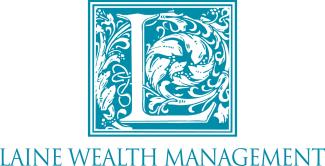
Four Ways to Help Lower Your Taxes Now
The financial decisions you make between now and the end of the year can significantly impact how much taxes you will have to pay once tax day arrives. If you take action by December 31st, you can reduce your tax burden and keep more of your hard-earned money. Here are some valuable tips for year-end tax planning.
Max out your retirement savings contributions
Tax-advantaged retirement accounts like 401(k)s and IRAs fund with pre-tax dollars. Any contributions you make can lower your taxable income. Therefore, max out your retirement account contributions if possible. If you receive a bonus from your employer at the end of the year and haven’t maxed out your contributions, request to have it contributed to your pre-tax retirement savings account.
For the 2022 tax year, you can contribute up to $20,500 to your 401(k) or $27,000 if you’re age 50 and older. The maximum IRA contributions are $6,000 and $7,000 if you’re over age 50. It’s also a good idea to max out your health savings account or HSA. In 2022, the limits are $3,650 for individuals, $7,300 for families, and an extra $1,000 for individuals over age 55.
Maximize your flexible saving account (FSA) contributions
You can think of FSAs as bank accounts to cover out-of-pocket healthcare costs. Due to the American Rescue Plan, the rules on FSAs are more generous this year. Any funds that remain in your account on December 31st, 2022, will roll over—but only if your company has opted-in for 2022 by amending their benefits plan with their plan administrator. This roll-over opportunity is also for 2023, but again dependent on your employer’s opt-in. Also, any employee with an FSA that has left their employer in 2022 is allowed to access 100% of it by the end of the year for approved expenses.
Participate in charitable giving
Not only will charitable giving allow you to support a cause or organization you believe in, but it also offers a great way to save on taxes, even if you take the standard deduction. To further enhance your tax benefits, you can donate appreciated property or stock instead of cash. No matter how you choose to donate, be sure to keep a receipt, credit card or bank statement, or any other document that proves your contribution.
Contribute to a 529 Plan
If you have children and would like to help them with the cost of college, there’s no better time than now to fund their 529 plans. You may deduct state taxes for contributions you make to a state-sponsored plan. Even though there is no federal tax deduction for 529s, the money in these accounts grows tax-free and can be withdrawn to use toward qualified education expenses like tuition, room and board, and books.
Consult your financial professional
Meet with your financial professional now to determine the ideal end-of-year tax-savings plan for your unique situation and set a tax-savings strategy in motion for 2023.
Important Disclosures:
This material was created for educational and informational purposes only and is not intended as ERISA, tax, legal or investment advice. If you are seeking investment advice specific to your needs, such advice services must be obtained on your own separate from this educational material.
Contributions to a traditional IRA may be tax deductible in the contribution year, with current income tax due at withdrawal. Withdrawals prior to age 59 ½ may result in a 10% IRS penalty tax in addition to current income tax.
Prior to investing in a 529 Plan investors should consider whether the investor's or designated beneficiary's home state offers any state tax or other state benefits such as financial aid, scholarship funds, and protection from creditors that are only available for investments in such state's qualified tuition program. Withdrawals used for qualified expenses are federally tax free. Tax treatment at the state level may vary. Please consult with your tax advisor before investing.
All information is believed to be from reliable sources; however LPL Financial makes no representation as to its completeness or accuracy
This article was prepared by FreshFinance.
LPL Tracking Number: 1-05216339

